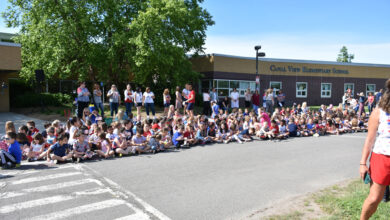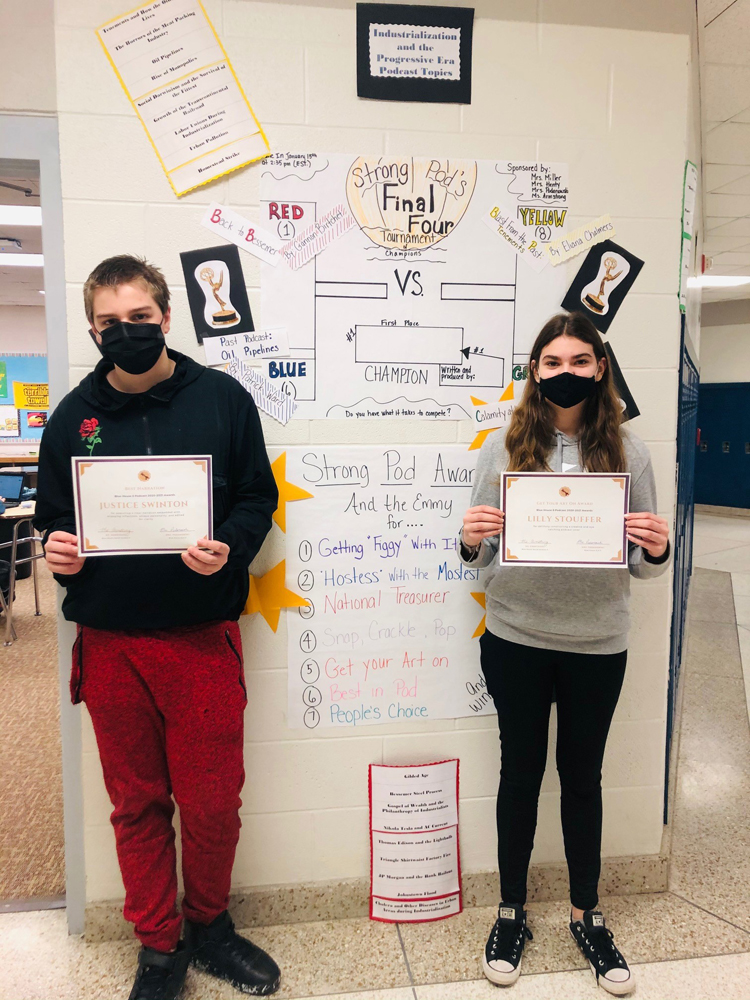SUNY Brockport program helps fill teacher shortage in Alaska

Over 3,000 miles from Brockport, nestled between towering mountains and on the shore of a modest lake, sits a place most have never heard of, and few will ever see. It is a village on the Alaskan peninsula whose population teeters on the edge of 100 – mostly Alaskan Native people. Accessible only by bush plane, the town of Nondalton has no railways, no roads, and no ports.
The village has one school, known colloquially as “the school,” and one store, similarly dubbed “the store.” To get around, residents primarily walk or ride ATVs, but with only a half-mile stretch from one end of Nondalton to the other, this is hardly seen as an inconvenience.
For one semester, English Education major Noah DeGraff called Nondalton home.
“You get on a very small airplane, usually just four seats. When the wind blows, it’s pretty rocky. It’s a pretty dangerous experience, but it’s also really, really exciting,” DeGraff said. “We flew over the mountains and I saw my village for the very first time. I saw the left end of it and the right end of it and the dirt path that connects to both ends, and they kind of just faded out into the tundra. And that was really my first experience of being like, I’m in the middle of nowhere.”
SUNY Brockport’s Alaska Student Teaching Program is a long-standing partnership with school districts in Alaska, in which students from Brockport and other SUNY institutions spend a semester teaching in villages across the state. Associate Professor of Education Chris Wilkens runs the program, which not only provides a unique and valuable learning experience for teacher candidates, but also helps funnel much-needed teachers into Alaska, which is facing a severe teacher shortage.
“What I love most is how versatile everyone becomes when working in a rural setting and that it’s cross-cultural,” Wilkens said. “Our Brockport candidates might not ever work with Alaska Native or other Indigenous students, and yet that’s pretty much the entire student body in these rural schools. They come back confident, proud, and with some good stories.”
Nondalton School, like many schools in Alaska, runs on a “skeleton staff.” In total, they have 21 students enrolled and just two teachers – one for elementary and one for secondary students. Adding DeGraff makes three.
“We have a twelve-to-one ratio, which a lot of people in the lower 48 would say that looks great,” said Principal Colter Barnes. “But these teachers will have five reading levels that they have to teach in 90 minutes. They’ll have kindergarten through fifth grade in one room. So that’s a huge challenge in itself.”
In a traditional student teaching experience, the student will shadow their mentor teacher for much of the time and then plan and give lessons under their supervision. However, DeGraff has acted as the main teacher for English, social studies, and other humanities subjects while his mentor teacher covers mainly math and science.
“I don’t always feel like I’m student-teaching and like I’m left to my own devices. But at the same time, I feel like it’s really grown my skills as a teacher being able to teach outside of my comfort zone and practice my skills in different ways,” DeGraff said. “I feel totally prepared to teach back in New York.”
Provided information and photo




